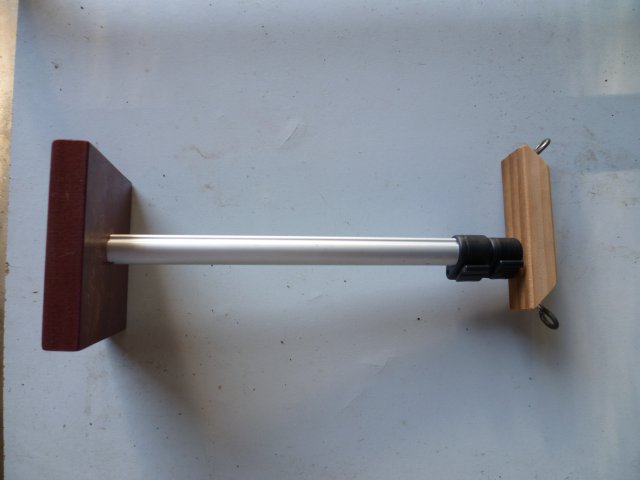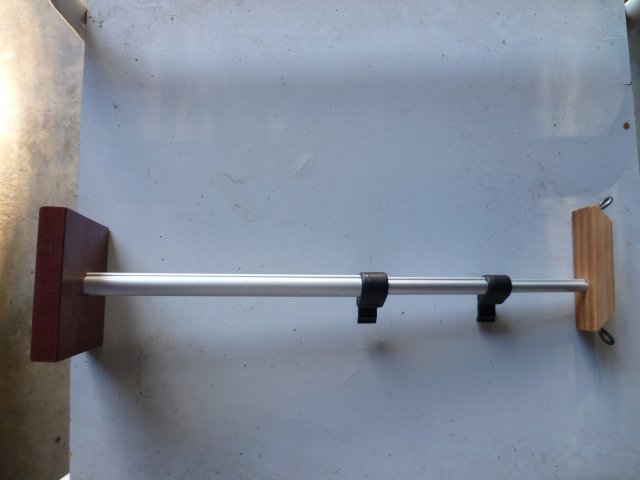-
Posts
4,810 -
Joined
-
Last visited
Content Type
Profiles
Forums
Events
Blogs
Gallery
Everything posted by dikman
-

Space saver table, where do I buy?
dikman replied to Jordanball33's topic in Leather Sewing Machines
My tables always seem to end up with extra holes drilled in them . -
I was about to say the same thing, Constabulary. I've seen it happen many times in forums, people need to keep this in mind when replying. That aside, fascinating stuff, Gregg, quite a mechanical contraption .
- 42 replies
-
- leather sewing machines
- what machine is used for leather
-
(and 13 more)
Tagged with:
- leather sewing machines
- what machine is used for leather
- professional leather sewing machine
- which leather sewing machine is best
- best machine for sewing leather
- sticky???
- sewing leather
- best antique leather sewing machine
- best new leather sewing machine
- leather sewing machines makes and models
- what machine do the pros use
- leather sewing machine reviews
- leather sewing machine opinions
- best sewing machine
- leather sewing machine question
-
Brian, I found the same thing except I filed the bottom of the plate to allow the lever to touch the bottom of the frame slot (can't go any further than that!). I watched all the mechanicals to make sure nothing was touching where it shouldn't and everything works fine.
-

which to choose Consew 206RB or Chandler 67?
dikman replied to DavidRM's topic in Leather Sewing Machines
Not controversial. Clutch motors are great for high speed garment machines, not so good for the slow speed and control often needed for leatherwork. Someone who is skilled can use a clutch motor successfully on leather, but that isn't most of us! If you're new to this then a clutch motor can be a scary thing to start with, if you can get it fitted with a servo then do so, it will make your leather sewing much more enjoyable. Fitting a speed reducer with a servo will also give you increased low-speed torque, but that may not be necessary, just depends what you're sewing.- 7 replies
-
- sewingmachine
- consew
-
(and 1 more)
Tagged with:
-
Download the manual and read it - lots of times! Try and clean out as much dust and dirt as possible, using a stiff brush and rags, before oiling it. If you can't get the Lily Oil then hydraulic oil (ISO 34) is pretty much the same thing. Make sure it turns over ok by hand, if it doesn't find out why (don't force it). Finally, if it's got a clutch motor be warned, they are scary things for a first-timer and hard to control for leather work. 225.pdf Manual.
-
I was just looking at the photos and thought "aha, the needle's in backwards" and felt pretty clever - then I found others had beaten me to the punch! Don't feel too bad, work9to5, you aren't the first to do this and you won't be the last. At least it's an easy fix.
-
If it worked before then the needle height should be ok. Did you insert the bobbin so that the thread is coming off in the right direction and is threaded correctly? You could try reversing it in the bobbin housing and see if it makes any difference.
-
That is one serious looking machine!
-
I've got one of these and it's a nice enough machine, for what it is. As Wiz said, the needles are what I would call an odd-ball size. I fitted a roller foot but haven't actually used the machine much (it was free, but took a bit of work to get it running). It should sew what you want, but If you're looking for your first leather machine this is probably not the right one to get (I consider it more like a second machine when someone already has a suitable leather machine). A bit of advice, if you think you'll be getting into leatherwork then seriously consider a walking foot machine. It will be much more suitable for leatherwork and as Wiz also said factor in a servo motor. You'll be struggling with anything less than this combination.
-

Odd Adler Cylinder Arm Machine?
dikman replied to Chuckydownunder's topic in Leather Sewing Machines
Chucky, as it's only $2000 I think you should buy it and then you can tell us exactly how it works and what it does. -

What I need to get Singer 111w100 up and running?
dikman replied to melancholycoyote's topic in Leather Sewing Machines
The motor looks ok to me, only down side with an all-in-one unit is that to change settings you have to clamber under the table to get to the controls. Had to smile at the "600w bigger than 3/4 hp" bit. Technically, yes, it's bigger than 3/4 hp but the difference is so small you'd never notice it! -

Beware of "semi-industrial" sewing machines
dikman replied to Darren Brosowski's topic in Leather Sewing Machines
Ah, but it's got a "new, powerful motor" . Quite a write-up they gave it, easy to see how someone new to the game could get suckered in. -
It's a fairly hefty poke to break a metal pulley (even if it is just cast alloy)!
-
Very impressive bit of engineering.(Does it make coffee too? ).
-

Randall/USM Cyclone stitching machine
dikman replied to Kevinjohnson's topic in Leather Sewing Machines
Looks a bit like a meat grinder! -

Prettiest singer 111w155... biggest pain in my butt
dikman replied to BrownChicken's topic in Leather Sewing Machines
Mike, if you ever have the time (!) such a how-to would be most interesting.- 24 replies
-
- tension release guide
- singer 111
-
(and 1 more)
Tagged with:
-
Actually, mate, any colour would be an improvement over how it looks at the moment!
-
Next you'll be airbrushing flames and skulls on them.
-

Best machine for sewing 20-24 ounce
dikman replied to T Moore Medicine Hat Saddlery's topic in Leather Sewing Machines
That is awesome. Tapokita tapokita indeed. -
Except for SV's .
-
Just as well you're not addicted. Keep away from industrial machines, though, or you WILL become addicted!
-
Thanks Alex, yes, it is interesting.
-

Prettiest singer 111w155... biggest pain in my butt
dikman replied to BrownChicken's topic in Leather Sewing Machines
Sure does look pretty, Brown Chicken, seems almost a shame to use it . I had to fit one of those tension release guides to my 111W117, as that model doesn't normally have one. It was obviously a generic piece and required a bit of judicious bending to get it to work. The hole that slides over the shaft didn't quite line up and when I got that working I had to tweak a couple of other bits to get it to push the pin. Just make sure there's nothing binding, it should move freely. I got there in the end, but it wasn't a simple "drop it in and it works" thing.- 24 replies
-
- tension release guide
- singer 111
-
(and 1 more)
Tagged with:
-
A long time ago I bought a small ratchet handle that takes 1/4" bits and found it very useful on sewing machines.
-
When I made a motorized bobbin winder I needed a thread guide for it but wanted it adjustable. Looking in one of my junk boxes I found the legs off a cheap camera tripod, fitted a wooden block with a couple of eyebolts on the top and attached it to the base of the winder. It worked so well that I made a free-standing one so that I could use the large spools with a portable machine. Extends high enough to let the thread unwind easily.




